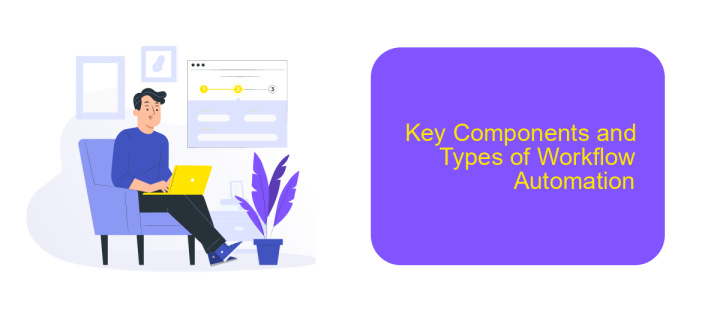What is the Main Purpose of Workflow Automation?
Workflow automation has become a cornerstone in modern business operations, streamlining processes and enhancing efficiency. By leveraging technology to automate repetitive tasks, organizations can reduce errors, save time, and allocate human resources to more strategic activities. This article delves into the primary objectives of workflow automation, shedding light on its significance and the transformative impact it has on various industries.
Introduction
In today’s fast-paced business environment, workflow automation has become a critical component for enhancing efficiency and productivity. By automating repetitive tasks, companies can not only save valuable time but also reduce the likelihood of human error. This allows employees to focus on more strategic initiatives that drive business growth.
- Streamlining repetitive tasks
- Reducing human error
- Enhancing productivity
- Fostering business growth
Integrating various tools and services is essential for effective workflow automation. Solutions like ApiX-Drive enable seamless integration between different applications, ensuring smooth data flow and communication. By leveraging such services, businesses can create a more cohesive and efficient operational environment, ultimately leading to improved performance and success.
Understanding Workflow Automation

Workflow automation refers to the use of technology to streamline and automate complex business processes. By replacing manual tasks with automated systems, organizations can reduce errors, save time, and enhance productivity. This involves the integration of various software applications and tools to create a seamless flow of information and tasks. Workflow automation can be applied across different departments, such as HR, finance, and customer service, to improve overall efficiency and effectiveness.
One of the key aspects of workflow automation is the ability to integrate different systems and applications. Services like ApiX-Drive facilitate this by providing a platform that connects various software tools, enabling them to work together harmoniously. With ApiX-Drive, businesses can automate data transfer between applications, set up triggers for specific actions, and monitor workflows in real-time. This not only simplifies the automation process but also ensures that all systems are synchronized, leading to more efficient and error-free operations.
Benefits and Significance of Workflow Automation

Workflow automation streamlines business processes by reducing manual intervention, thus saving time and minimizing errors. This leads to increased efficiency and allows employees to focus on more strategic tasks, enhancing overall productivity.
- Cost Efficiency: Automation reduces the need for manual labor, cutting operational costs.
- Consistency: Automated workflows ensure tasks are completed uniformly, improving quality control.
- Scalability: As your business grows, automated workflows can easily adapt to increased workloads.
- Enhanced Collaboration: Automation tools often come with features that facilitate better communication among team members.
- Data Accuracy: Automated systems minimize human error, ensuring accurate data processing.
Integrating different systems and tools is crucial for effective workflow automation. Services like ApiX-Drive make it easy to connect various applications, ensuring seamless data flow and enhanced operational efficiency. By leveraging such integration platforms, businesses can further optimize their processes, leading to improved performance and significant time savings.
Key Components and Types of Workflow Automation

Workflow automation aims to streamline and optimize business processes by reducing manual tasks and increasing efficiency. Key components of workflow automation include triggers, actions, and conditions that define how tasks are executed and managed.
There are several types of workflow automation, each serving different purposes. These include task automation, process automation, and integration automation. Task automation focuses on automating individual tasks, while process automation deals with entire workflows. Integration automation connects different systems and applications to work seamlessly together.
- Task Automation: Automates repetitive tasks to save time and reduce errors.
- Process Automation: Streamlines complex workflows by automating multiple steps.
- Integration Automation: Connects various systems and applications for seamless data flow.
Tools like ApiX-Drive are crucial for integration automation, allowing businesses to connect different software and services effortlessly. By using ApiX-Drive, companies can automate data transfer between platforms, enhancing overall productivity and reducing the need for manual intervention.
Conclusion
In conclusion, workflow automation serves as a pivotal tool for enhancing efficiency and reducing manual effort in various business processes. By automating repetitive tasks, organizations can allocate their human resources to more strategic activities, thereby fostering innovation and growth. The implementation of workflow automation not only streamlines operations but also minimizes errors, ensuring a more reliable and consistent output.
Moreover, the integration capabilities of workflow automation tools, such as ApiX-Drive, further amplify their benefits. These platforms facilitate seamless connectivity between disparate systems, enabling a cohesive and synchronized workflow. As businesses continue to evolve, the adoption of workflow automation becomes increasingly essential for maintaining competitiveness and achieving operational excellence. Embracing these technologies allows organizations to stay agile and responsive in a rapidly changing market landscape.


FAQ
What is the Main Purpose of Workflow Automation?
How does workflow automation improve efficiency?
What types of tasks can be automated in a workflow?
How can I implement workflow automation in my business?
What are the benefits of using workflow automation tools like ApiX-Drive?
Time is the most valuable resource in today's business realities. By eliminating the routine from work processes, you will get more opportunities to implement the most daring plans and ideas. Choose – you can continue to waste time, money and nerves on inefficient solutions, or you can use ApiX-Drive, automating work processes and achieving results with minimal investment of money, effort and human resources.

